Are you a fast-growing company looking to scale without burning through your budget? In today’s tech-driven landscape, SaaS tools have become indispensable for streamlining operations and boosting productivity.
However, the convenience of SaaS comes at a cost one that can quickly spiral out of control if left unchecked.
In this ultimate guide on SaaS Spend Management, we unlock the secrets to avoiding common SaaS buying mistakes that plague many businesses. Whether you’re a seasoned entrepreneur or new to the world of SaaS, we’ve got you covered with practical tips to manage your spending effectively.
Our mission is to equip you with the knowledge and strategies to optimize your SaaS investments and drive maximum value for your company. From tracking usage to negotiating contracts, we’ll walk you through the essential steps to regain control over your expenses.
With that said, let’s get right in!
What is SaaS Spend Management?
SaaS Spend Management is the process of effectively overseeing and optimizing the expenses related to SaaS subscriptions.
As businesses increasingly rely on various SaaS platforms to support their operations, managing the costs of these subscriptions becomes crucial for financial health and sustainable growth.
In practical terms, SaaS Spend Management involves closely tracking the utilization of each SaaS tool and understanding its impact on the organization. By doing so, businesses can identify redundant or underused subscriptions and make informed decisions about their software investments.
This process typically involves:
1. SaaS Inventory
Creating a comprehensive list of all active SaaS subscriptions used across different departments within the organization.
2. Usage Analysis
Monitoring and analyzing the actual utilization of each SaaS tool to determine its value and relevance to the business.
3. Cost Optimization
Identifying opportunities to reduce costs, such as negotiating contracts, opting for appropriate pricing tiers, or consolidating overlapping functionalities.
4. Policy Implementation
Establishing clear guidelines and policies for purchasing new SaaS subscriptions, ensuring that all acquisitions align with the company’s needs and budget.
This practice enables businesses to maintain financial discipline while leveraging the benefits of SaaS platforms to support their operations and growth.
How Much Do Companies Spend on SaaS Applications Every Year?
As of 2023, the spending on Software-as-a-Service (SaaS) applications has seen remarkable growth, becoming a vital component of modern business operations. The demand for SaaS tools has surged due to their ability to empower businesses with streamlined processes, enhanced customer engagement, and automation capabilities.
Here’s how companies from various segments spend on SaaS tools.
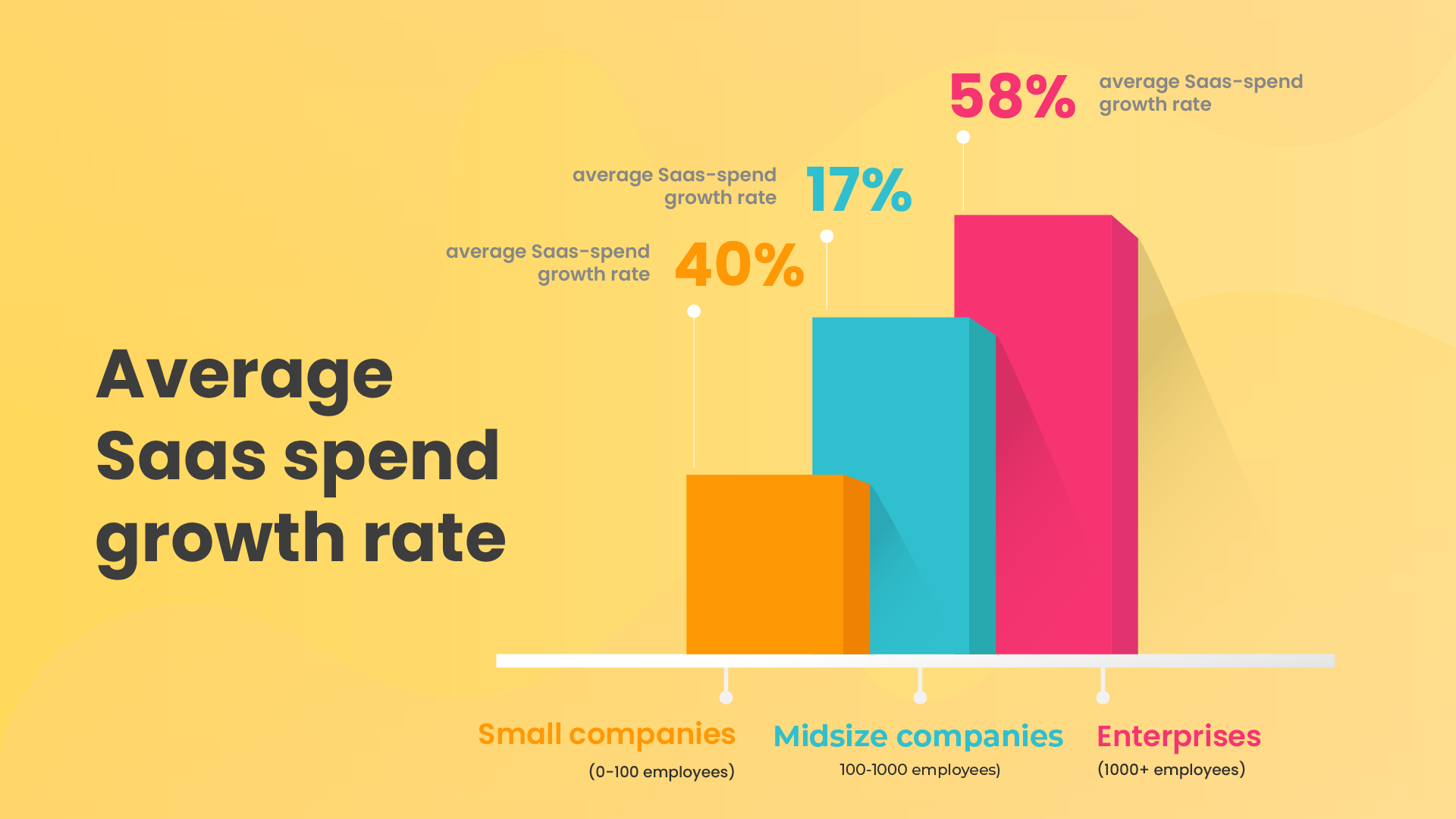
1. Small Companies
Small businesses (0-100 employees) have significantly contributed to the rising SaaS expenditure.
In 2021 alone, small companies spent approximately $145 billion on B2B SaaS technology, with experts projecting a year-over-year growth rate of 40%. The average growth rate for annualized SaaS spend by small companies stands at an impressive 58%.
These statistics highlight the growing reliance on SaaS solutions among smaller enterprises as they seek efficient and cost-effective software tools to support their operations.
2. Mid-sized Companies
Mid-sized companies (100-1000 employees), forming a crucial segment of the SaaS market, have also shown significant investment in SaaS applications.
Gartner predicts that SaaS spending in the enterprise, which includes mid-sized companies, will reach $195 billion in 2023, reflecting a 17% increase from the previous year.
This growth trend underscores the importance of SaaS solutions in supporting the unique needs and growth aspirations of mid-sized organizations.
3. Enterprise Industries
Enterprises (1000+ employees) have been at the forefront of SaaS adoption, leveraging these solutions to drive innovation and agility.
In 2021, global end-user spending on SaaS reached $146 billion, with expectations to reach $195 billion by 2023.
Vendor’s data further reveals that the average growth rate for annualized spend on SaaS by enterprise companies is approximately 58%.
The increased adoption of SaaS applications within enterprise industries can be attributed to the benefits of scalability, cost-effectiveness, and reduced dependency on traditional IT infrastructure.
These statistics underscore the robust growth of the SaaS market across diverse company sizes and industries. As businesses continue to embrace digital transformation and cloud-based solutions, the demand for SaaS applications is expected to further escalate.
It is evident that SaaS spending has become a strategic investment for companies seeking to optimize their operations and stay competitive in today’s dynamic business landscape.
Why is SaaS Spend Management So Important?
Effective SaaS Spend Management is of utmost importance for companies of all sizes. By implementing robust strategies to manage SaaS expenses, businesses can address various critical aspects that directly impact their financial health and operational efficiency.
Let’s look at some of the most important reasons why SaaS spend management is crucial for all businesses.
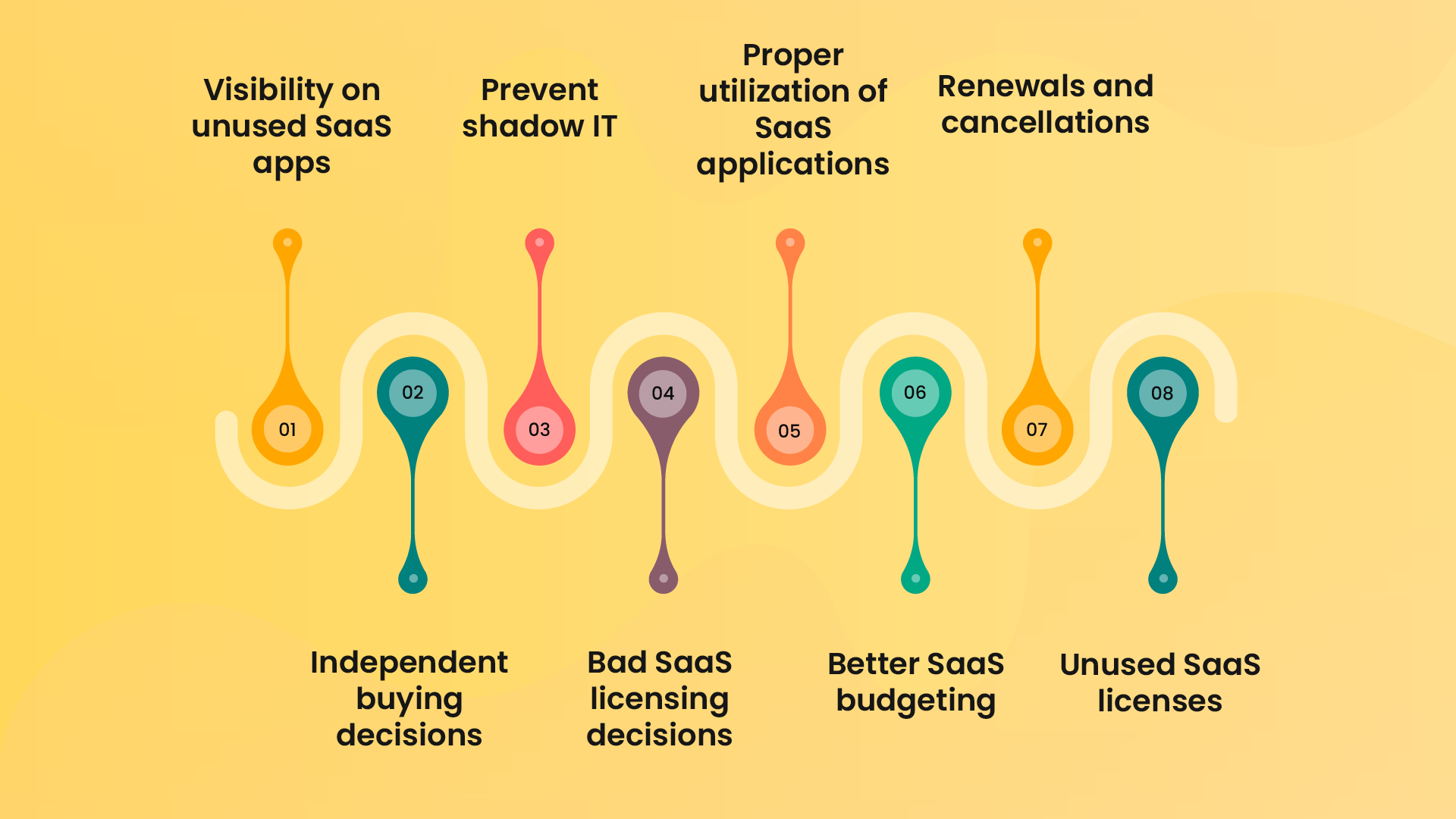
1. Visibility on Unused SaaS Apps
Without proper SaaS Spend Management, companies may inadvertently accumulate unused or underutilized SaaS applications.
This lack of visibility can lead to wasted resources and unnecessary expenditures on licenses that provide little to no value to the organization.
Actively monitoring and identifying unused apps means you can optimize their software stack and eliminate unnecessary costs.
2. Independent Buying Decisions
In the absence of centralized SaaS Spend Management, different departments within a company may independently make software purchasing decisions.
This decentralized approach can lead to duplicate subscriptions and a lack of coordination, resulting in higher overall expenses.
Centralizing SaaS purchasing decisions allows for better coordination, negotiating power, and cost control.
3. Prevent Shadow IT
Shadow IT refers to the use of unauthorized software or applications within a company without IT or management’s knowledge. Such unapproved software deployments can pose security risks, compliance issues, and additional costs.
Proper SaaS Spend Management helps identify and manage Shadow IT, ensuring that all software usage aligns with company policies and security standards.
4. Bad SaaS Licensing Decisions
Without careful management, companies may unintentionally commit to long-term or unsuitable SaaS licensing agreements. These bad decisions can lead to overpaying for features that are not utilized or being locked into contracts that no longer meet the organization’s evolving needs.
SaaS Spend Management enables businesses to make informed licensing decisions based on actual usage and requirements.
5. Proper Utilization of SaaS Applications
Understanding how employees utilize different SaaS applications is crucial for optimizing productivity and operational efficiency.
SaaS Spend Management provides insights into application usage patterns, allowing businesses to identify opportunities for training, process improvements, or the consolidation of overlapping tools.
6. Better SaaS Budgeting
SaaS expenses can add up quickly, making it essential to establish a well-defined budget to avoid overspending.
Effective SaaS Spend Management enables businesses to allocate budgets accurately and anticipate potential cost fluctuations, ensuring financial stability and resource allocation for other critical areas.
7. Renewals and Cancellations
Tracking SaaS subscription renewals and their corresponding costs is vital to avoid unexpected charges or unwanted auto-renewals.
SaaS Spend Management ensures that businesses can proactively review and assess each renewal, making informed decisions on whether to continue, modify, or cancel subscriptions as needed.
8. Unused SaaS Licenses
Companies often pay for more licenses than they require, resulting in unused or underused licenses. SaaS Spend Management helps identify these inefficiencies, enabling businesses to right-size their subscriptions and potentially save significant costs.
A 3-Step SaaS Spend Management Strategy
Unmanaged SaaS spending can quickly become overwhelming. To ensure cost-effectiveness and maximize the value of SaaS investments, organizations need a robust SaaS Spend Management Strategy.
Here’s a concise three-step approach to achieve it:
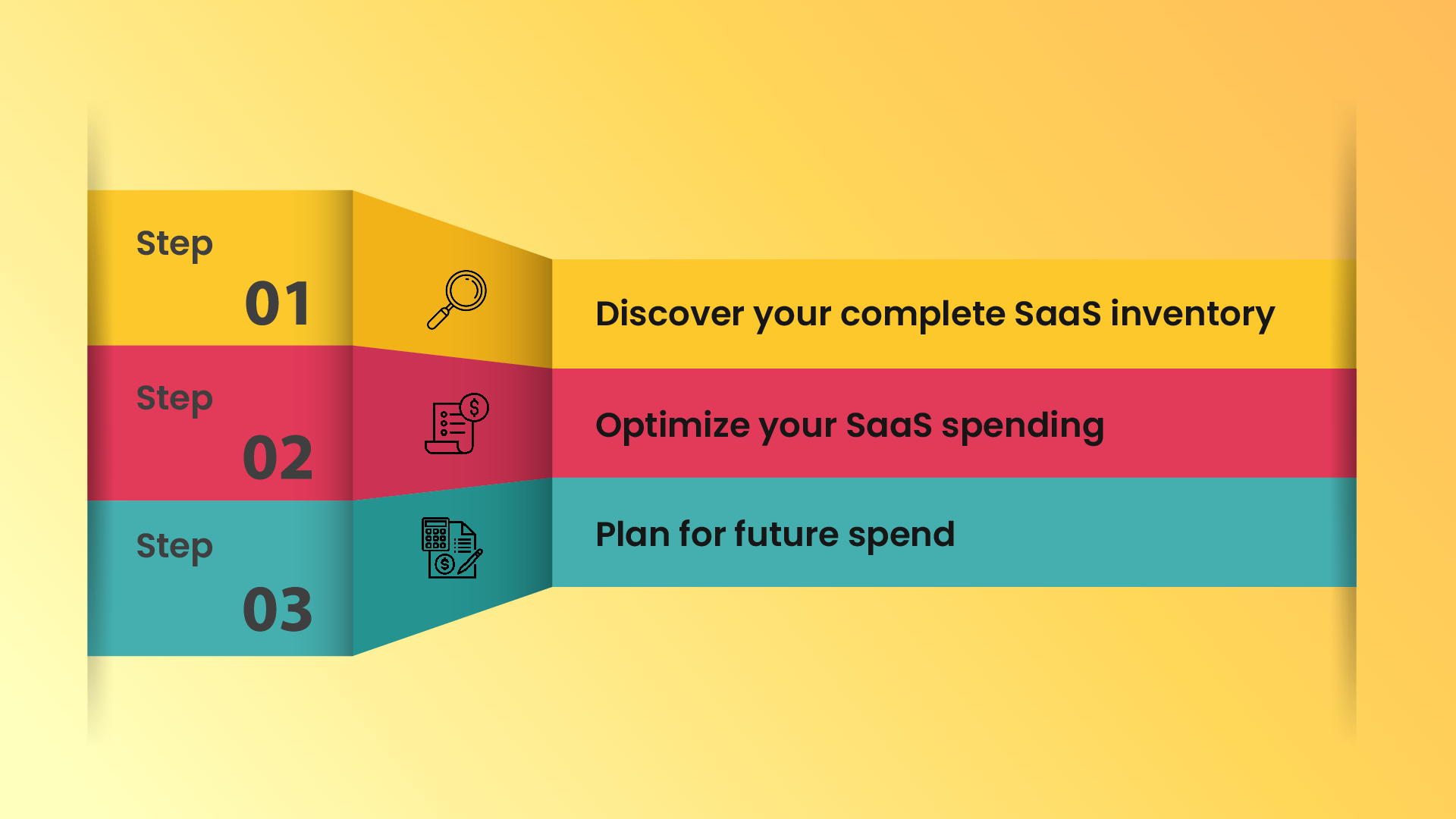
Step 1: Discover Your Complete SaaS Inventory
The foundation of an effective SaaS Spend Management Strategy lies in gaining a thorough understanding of your organization’s SaaS inventory. This entails identifying all software and tools utilized across various departments, teams, and business units.
While seemingly straightforward, many large organizations struggle to keep track of their SaaS applications, often employing over a hundred different SaaS tools.
Various methods such as manual spreadsheets, single sign-on tools, web browser plugins, and cloud access security brokers are commonly used for SaaS discovery, but they may have limitations.
To ensure accurate and comprehensive discovery, it is recommended to leverage a robust SaaS management platform that seamlessly integrates with financial systems, offering a “follow the money” approach to identify all spending sources.
This comprehensive discovery serves as a crucial first step towards effective SaaS Spend Management.
Step 2: Optimize Your SaaS Spending
With a clear picture of your SaaS inventory, the next step is to optimize your SaaS spending. This involves identifying opportunities to control costs and increase operational efficiencies within your SaaS stack.
A significant area for optimization lies in reducing underused licenses, as approximately 44% of SaaS licenses remain unutilized in a given 30-day period. Eliminating these unused or underused tools can lead to substantial cost savings.
Additionally, streamlining overlapping functionalities and consolidating duplicate subscriptions can further reduce expenses and enhance purchasing power for negotiating better pricing.
Data-driven decisions, based on usage metrics and cost comparisons, play a pivotal role in identifying areas for optimization. By aligning the number of licenses and features with the actual number of users and their needs, organizations can right size their SaaS tools, thus optimizing costs.
Step 3: Plan for Future Spend
The final step in crafting an effective SaaS Spend Management Strategy is to plan for future spend. Establishing a system of record for SaaS applications provides a holistic view of your software inventory, enabling better forecasting of future spend and facilitating informed contract negotiations.
Regularly reviewing your SaaS stack, identifying upcoming renewal dates, and evaluating ROI can help you make data-driven decisions for future purchases.
Having a well-thought-out plan in place empowers organizations to proactively manage their SaaS expenses and ensure a financially optimized SaaS ecosystem.
SaaS Spend Management Best Practices
Effective SaaS spend management is crucial for any organization looking to optimize its software expenses and ensure the best return on investment.
To achieve these goals, consider implementing these actionable best practices.
- Procure your SaaS tool wisely
- Get a good grasp on SaaS policies
- Be mindful of contract terms and clauses
- Ace your SaaS contract negotiations
- Look out for festive seasonal discounts
- Manage your SaaS stack
- Keep track of Return on Investment
- Get a SaaS spend management software

1. Procure Your SaaS Tool Wisely
When selecting a new SaaS tool, don’t rush into decisions. Conduct thorough research to identify the most suitable options that align with your business needs.
Consider factors such as functionality, pricing, scalability, and customer support. Take advantage of free trials or demos to assess the tool’s suitability before committing to a purchase.
2. Get a Good Grasp on SaaS Policies
Establish clear and well-defined SaaS policies within your organization. These policies should outline guidelines for SaaS procurement, usage, and compliance.
Educate employees about these policies to ensure everyone follows the same standards, avoiding ad-hoc purchases that can lead to overspending.
3. Be Mindful of Contract Terms and Clauses
Review SaaS contracts diligently before signing. Pay close attention to contract terms, renewal clauses, and termination procedures. Look for any potential hidden costs or auto-renewals that might catch you off guard. Being aware of these details will help you plan and budget effectively.
4. Ace Your SaaS Contract Negotiations
Negotiate with SaaS vendors to secure the best deals for your organization. Explore options for volume discounts, annual billing discounts, or extended trial periods.
Demonstrate your willingness to commit to long-term partnerships, which can often lead to more favorable pricing terms.
5. Look Out for Festive Seasonal Discounts
Keep an eye out for festive seasonal offers and promotions from SaaS providers. Many vendors offer discounts during special occasions or at year-end. Utilize these opportunities to upgrade or renew your SaaS subscriptions at discounted rates.
6. Manage Your SaaS Stack
Regularly assess your existing SaaS applications to identify overlapping functionalities or redundant tools. Consolidate applications with similar features to streamline processes and reduce costs.
Maintaining a lean and efficient SaaS stack helps eliminate unnecessary expenses.
7. Keep Track of Return On Investment
Monitor the performance and utilization of each SaaS tool to gauge its effectiveness. Calculate the RoI for each application to determine whether it justifies its cost. Consider discontinuing or optimizing tools that do not provide adequate value.
8. Get a SaaS Spend Management Software
Invest in a reliable SaaS spend management software or platform to centralize and automate expense tracking. These tools offer visibility into SaaS usage, contract details, and spending patterns. They empower you to make data-driven decisions for cost optimization.
Implementing these SaaS spend management best practices will empower your organization to take control of SaaS expenses, minimize wasteful spending, and make strategic choices that drive efficiency and productivity.
Adopting these actionable steps helps you unlock the full potential of your SaaS investments and achieve long-term success in a rapidly evolving digital landscape.
5 best SaaS spend management software & platforms in 2023
Managing SaaS spend efficiently is a top priority for businesses today. With the rise of cloud-based applications, organizations seek innovative solutions to optimize spending, enhance collaboration, and improve financial management.
Here is a list of the top 5 SaaS spend management software you can choose from in 2023!
1. Zapro.ai
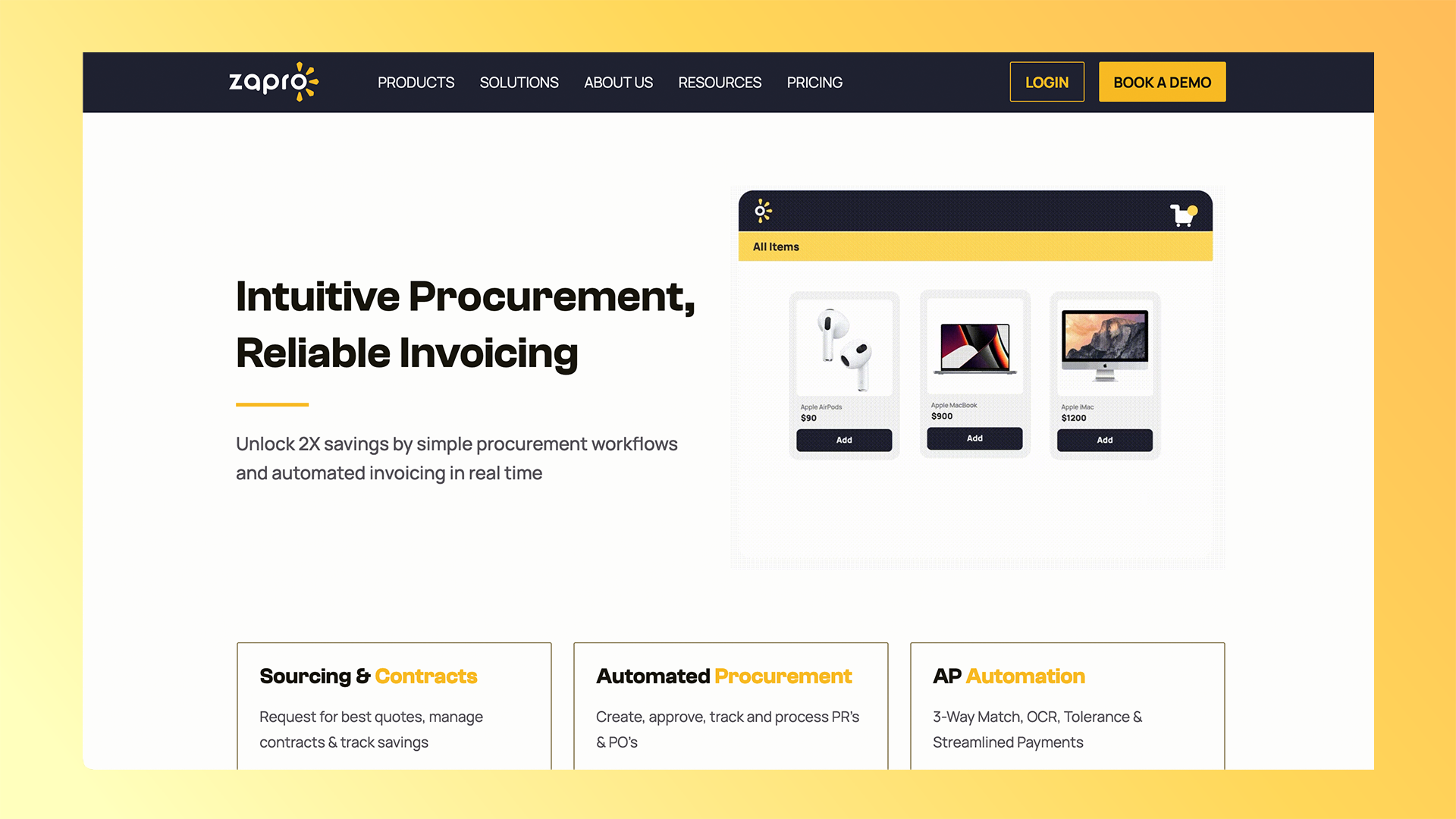
Zapro is a remarkable SaaS spend management software, offering a host of features that elevate its significance in the field. Let’s explore these key features that make Zapro an outstanding choice for optimizing your organization’s spending.
- Streamlined procurement processes
Zapro introduces automation to streamline procurement, making it a breeze for your team. With reduced manual efforts and improved user adoption, you’ll experience enhanced efficiency and reduced processing costs, ultimately saving valuable time and resources.
- All-inclusive spend management
Unlike limited solutions that cater to specific spending areas, Zapro is a comprehensive Business Spend Management (BSM) platform. It covers spending across all categories, leaving no penny unaccounted for. From office supplies to travel expenses, every detail is analyzed, allowing you to make data-driven decisions and identify cost-saving opportunities.
- Accessible to all business sizes
Zapro breaks barriers by making SaaS spend management accessible and affordable for businesses of all sizes and industries. Whether you’re a startup or an enterprise, Zapro aims to enable 100% spend under management, regardless of your spending category.
- Enhanced visibility and cost analysis
With Zapro, you gain complete visibility into your organization’s spending habits. Analyze every aspect, identify patterns, and make smarter decisions based on accurate data. By optimizing costs, you can improve your bottom line and stay ahead in a competitive market.
- User-friendly interface
Zapro prioritizes a user-friendly experience, ensuring that navigating complex business software becomes as intuitive as using your favorite social media app. The platform’s simple interface makes implementation smooth, empowering your team to adapt quickly.
- Lightning-fast procurement
True to its name, Zapro (ZAP PROCURE) delivers rapid procurement processes. From sourcing to payments, every step is handled swiftly, allowing your business to stay agile and proactive in responding to market demands.
- Quick and efficient implementation
One of Zapro’s standout features is its quick implementation process. Within two weeks, you can experience the value and impact of your digital transformation journey. Say goodbye to lengthy deployment timelines and start reaping the benefits in no time.
Pricing:
Zapro offers three different plans for users.
- Free trials for the first 50 invoices and purchase orders; up to 3 users.
- A Growth Plan for $299 a month for up to 200 invoices/POs and up to 10 users.
- An Enterprise Plan for unlimited users and unlimited invoices/POs; contact them for pricing details.
2. Sastrify
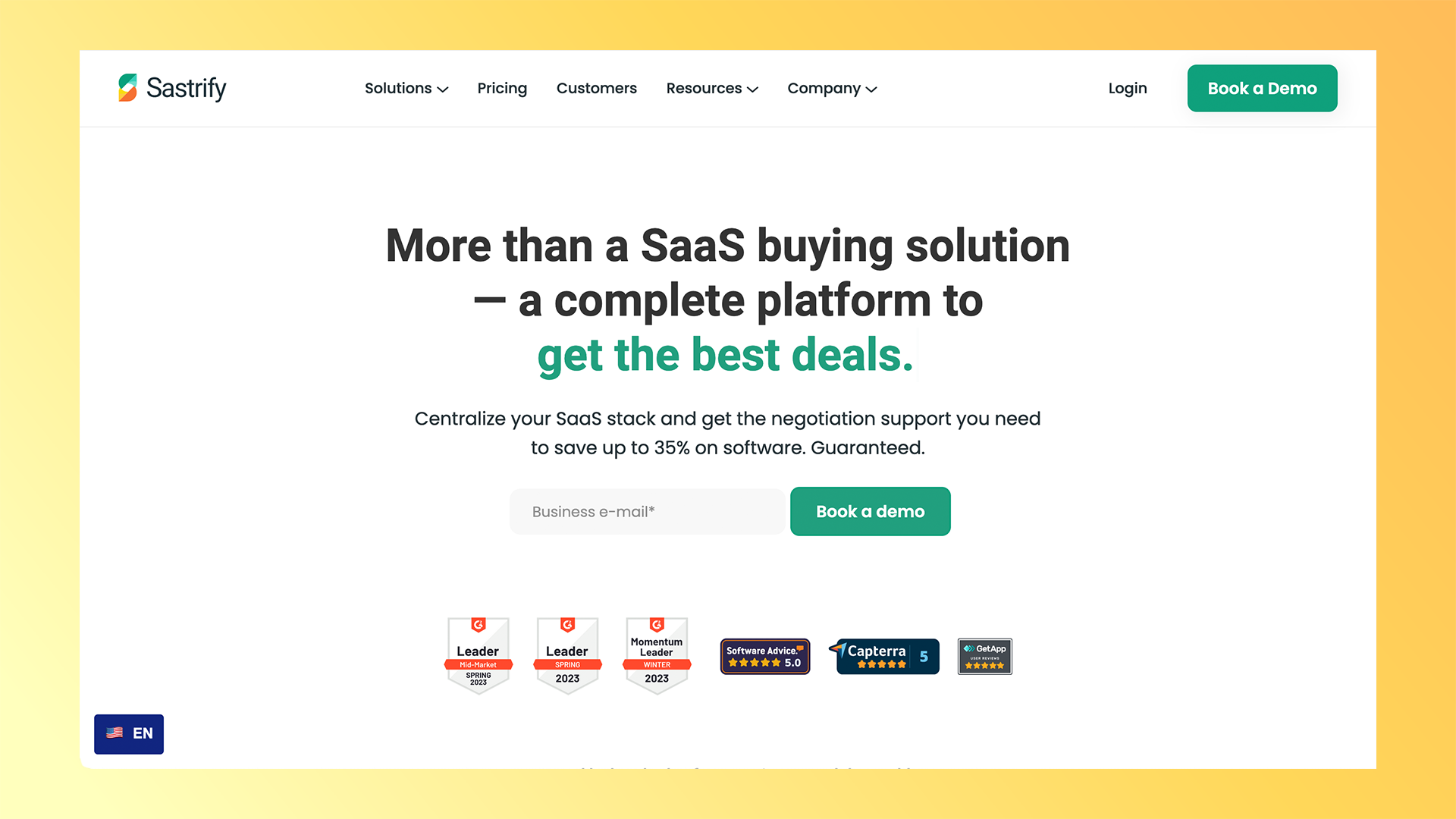
Sastrify is a leading digital procurement platform designed specifically for SaaS products. It empowers businesses to secure the best deals when purchasing and renewing SaaS subscriptions, ensuring optimal management and cost efficiency of SaaS tools.
By fostering seamless collaboration among procurement, tech, and finance teams, Sastrify facilitates best-in-class buying processes, establishes key partnerships with top SaaS vendors, and curates a growing database of price benchmarks.
Sastrify’s core features can be broken down into three domains: Tracking, Management and Insights.
Under Tracking, you get:
Under Management, you get:
Under Insights, they provide:
Pricing Plans:
Sastrify offers flexible pricing plans tailored to meet varying business needs. The following are the available subscription plans:
- Starter Plan: 2,490/month
- Advanced Plan: 3,990/month
- Professional Plan: 5,490.00/month
- Enterprise Plan: For enterprise-grade solutions, businesses can reach out to the Sastrify team for custom pricing options.
3. Substly
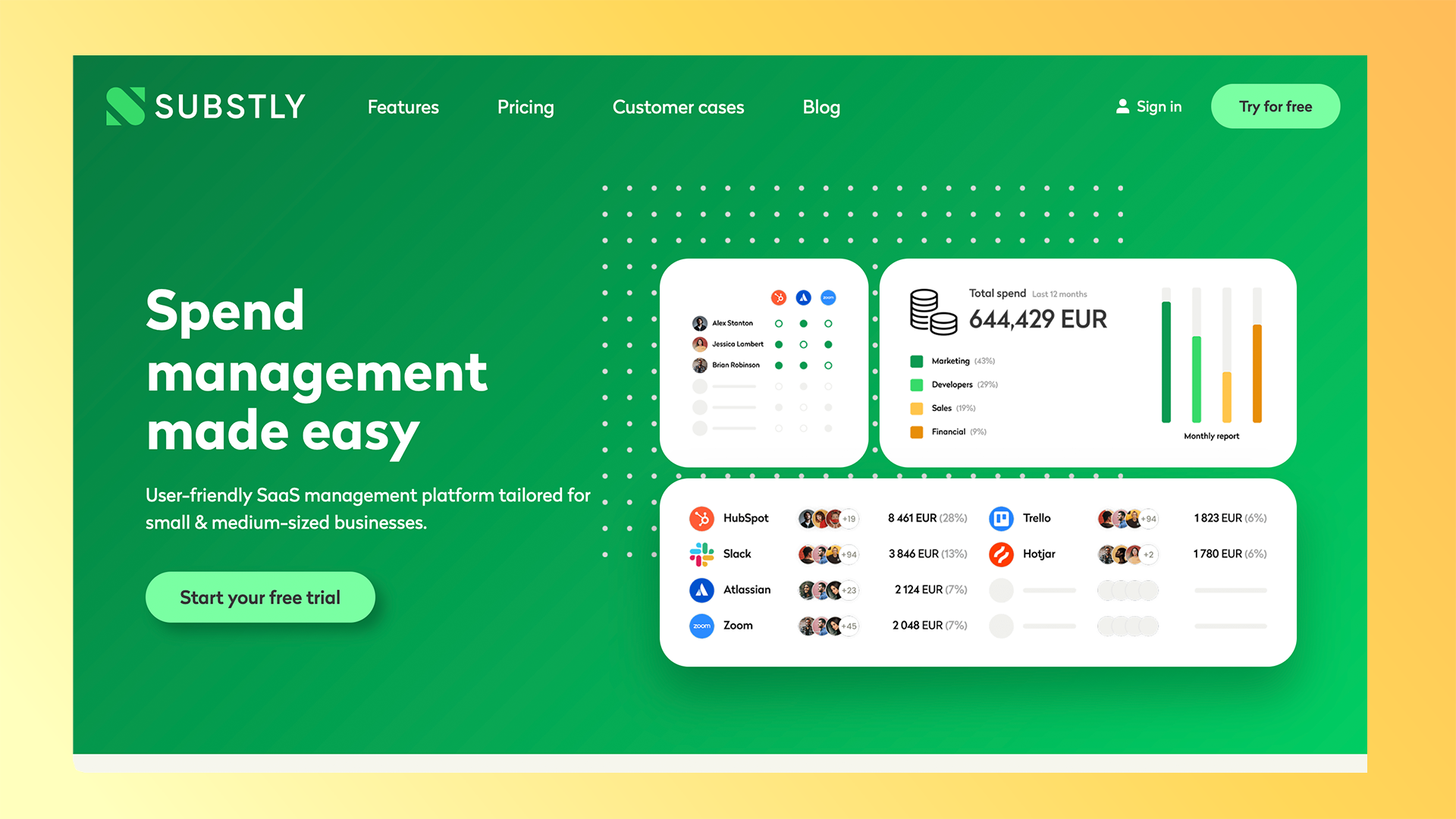
Substly is a powerful solution dedicated to assisting small and medium-sized companies in effectively reducing SaaS sprawl. By offering a user-friendly platform and streamlining SaaS management processes, Substly empowers businesses to gain control over their software subscriptions.
This cost-efficient tool delivers enterprise-level functionalities at an accessible entry-level price, making it an ideal choice for companies seeking to optimize their SaaS usage.
Key features:
Pricing plans:
Substly offers flexible pricing plans to suit different business needs. The following are the available subscription options:
- Essentials Plan: $2 per Employee
- Standard Plan: $5 per Employee
- Pro Plan: For advanced features, businesses can reach out to Substly for customized pricing options.
4. BetterCloud
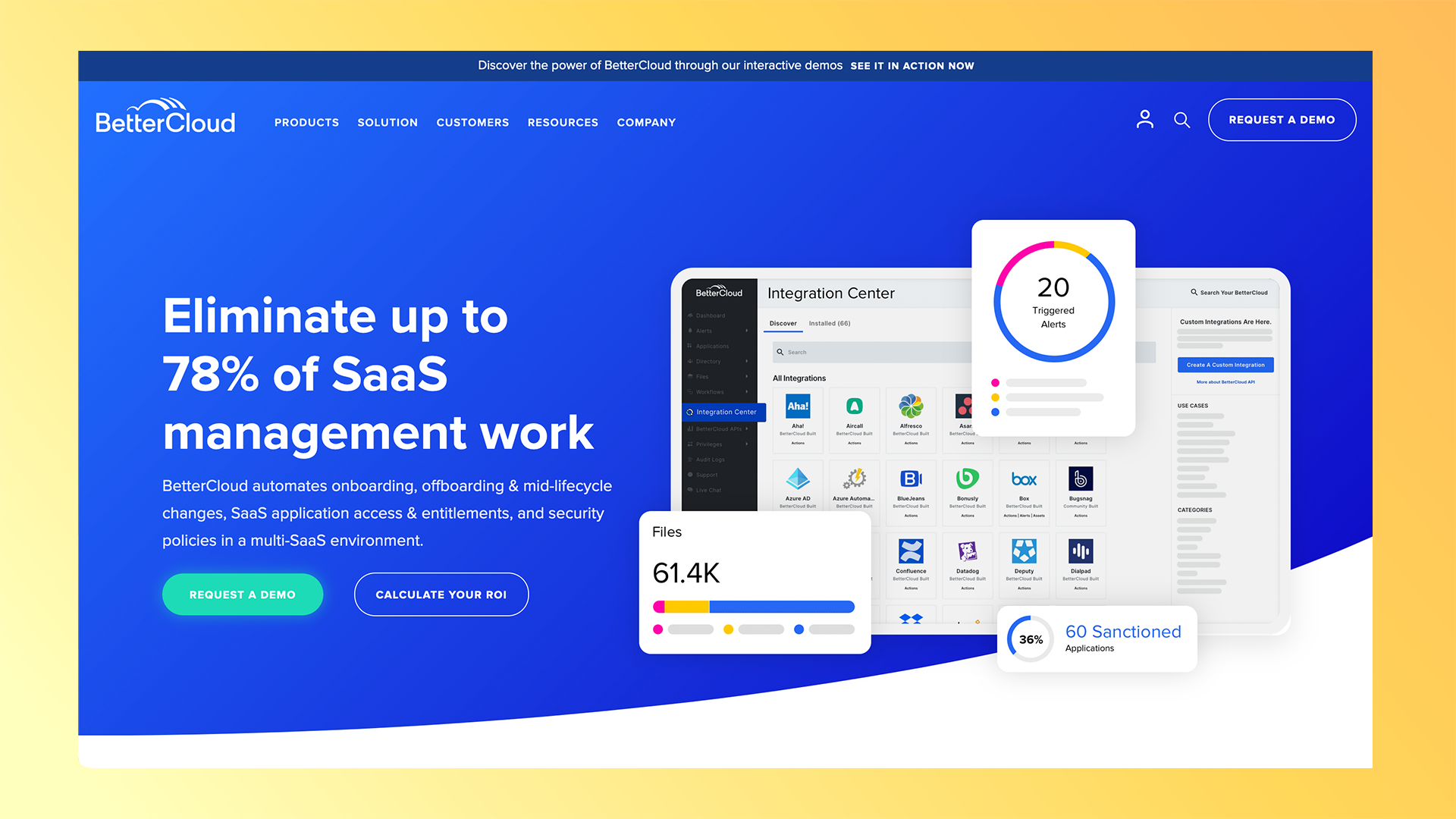
BetterCloud is a market-leading SaaS management platform that empowers IT teams to revolutionize their workflows by automating up to 78% of SaaS management tasks.
With BetterCloud, businesses can streamline essential processes like onboarding, offboarding, access management, and security policies across multiple SaaS applications.
As a result, thousands of BetterCloud’s customers experience heightened operational efficiency and increased employee productivity.
Some of BetterCloud’s key features include the following:
User On/Off Boarding:
- BetterCloud simplifies user onboarding and offboarding processes, ensuring smooth transitions for employees joining or leaving the organization.
- Role management functionalities enable IT teams to assign appropriate access levels to new users seamlessly.
- Access termination features safeguard company data by promptly revoking access for departing employees.
Configuration:
- With a wide range of APIs and integrations, BetterCloud ensures seamless compatibility with various target systems.
- The platform supports bulk changes, enabling swift and straightforward adjustments to settings and permissions.
Compliance:
- Threat alerting capabilities enhance security measures by promptly notifying IT teams of potential risks or breaches.
- Access controls ensure that users only have permissions for the resources they genuinely require.
- Policy enforcement features automate adherence to organizational security policies and guidelines.
- Extensive logging and monitoring capabilities provide comprehensive oversight of SaaS activities.
Automation:
- BetterCloud’s automation capabilities streamline critical SaaS management tasks, reducing manual effort and minimizing errors.
- Automated processes help ensure consistent and compliant actions across the organization.
Pricing:
For detailed pricing information, businesses are encouraged to contact BetterCloud directly to explore the available plans tailored to their specific needs.
5. Productiv
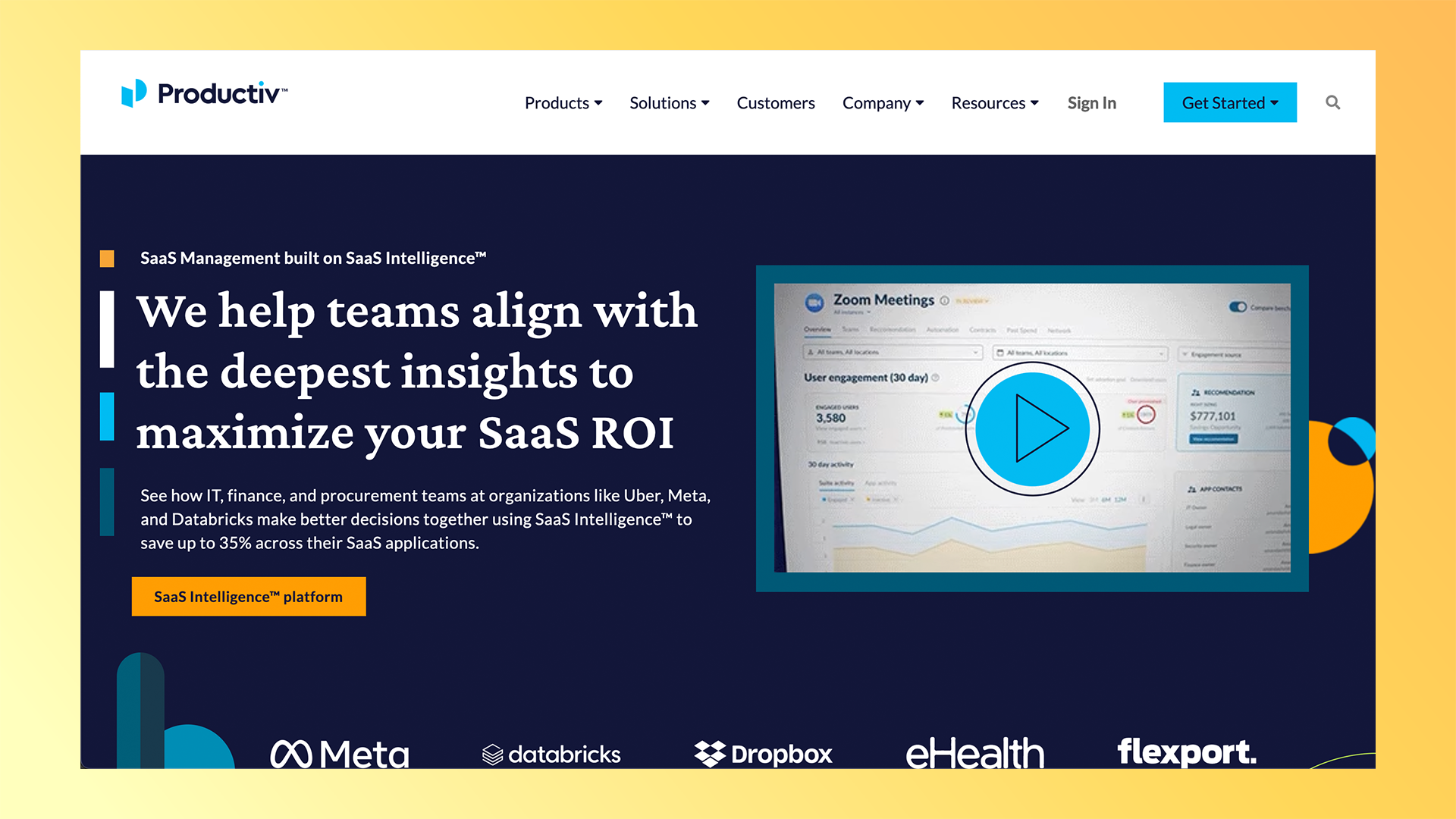
Productiv goes beyond being a typical SaaS management solution. It offers the Productiv SaaS Intelligence platform, a powerful tool that aligns IT, procurement, finance, and business leaders with accurate data to proactively govern, optimize spending, and enhance operational efficiency.
Moreover, the platform prioritizes employee engagement across SaaS applications, placing the needs of users at the forefront of its approach.
Key Features:
Pricing:
Productiv offers a customized Enterprise package tailored to meet the unique requirements and scale of each business. For detailed pricing information, companies are encouraged to engage directly with Productiv to discuss their specific needs and obtain a personalized plan.
Optimize your SaaS expenses with Zapro’s real-time analysis
Effectively managing SaaS expenses is crucial for any modern business looking to drive operational efficiency and cost optimization. With the right SaaS spend management solution like Zapro.ai, businesses can gain a comprehensive view of their SaaS landscape, track spending, and identify opportunities for savings.
Take advantage of their free trial to experience the platform’s capabilities firsthand. Upon choosing the Growth Plan, you can unlock powerful features that streamline procurement processes, track utilization, and make data-driven decisions to optimize costs.
By harnessing the power of Zapro.ai, you can not only gain control over your SaaS spending but also enhance productivity, improve employee engagement, and align IT, procurement, finance, and business leaders with trusted data for proactive governance.
Take the first step towards smarter SaaS spend management today and embark on a journey of maximizing savings while optimizing your business operations. Schedule a demo with Zapro today!
